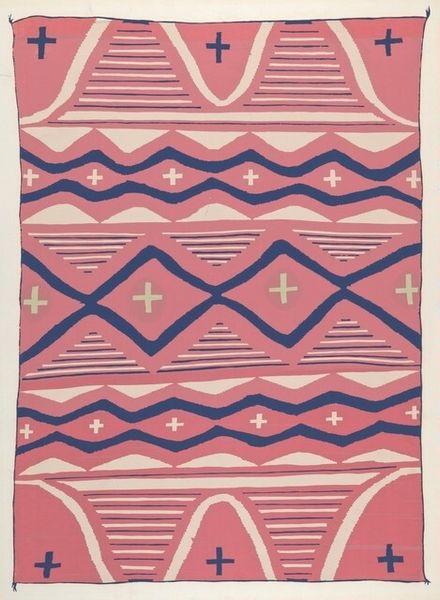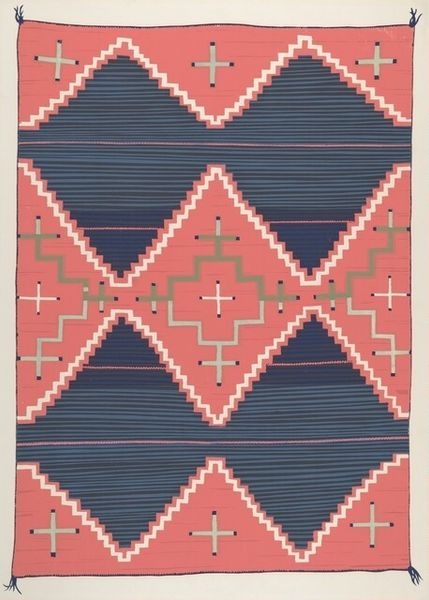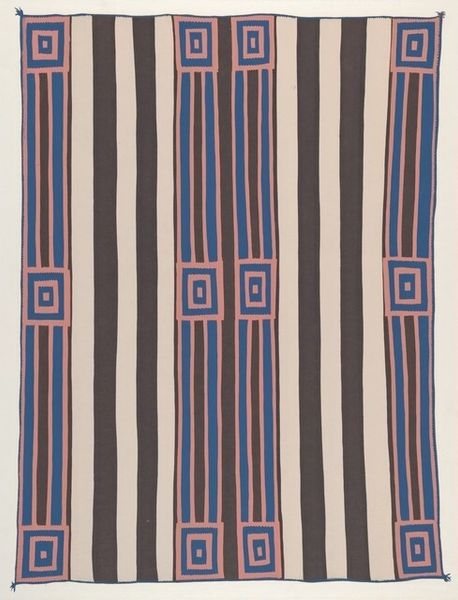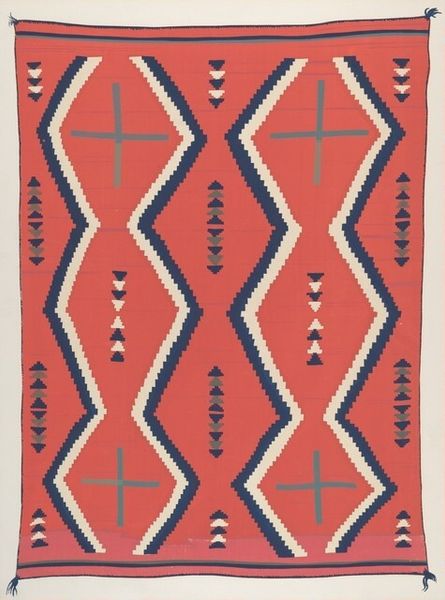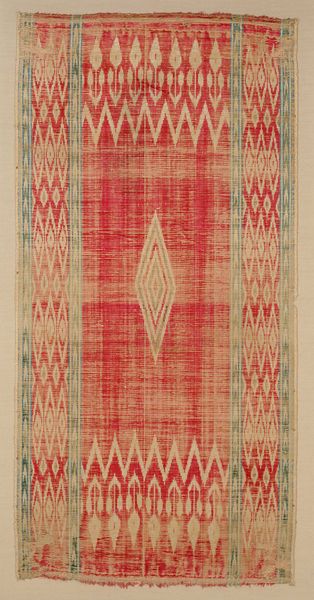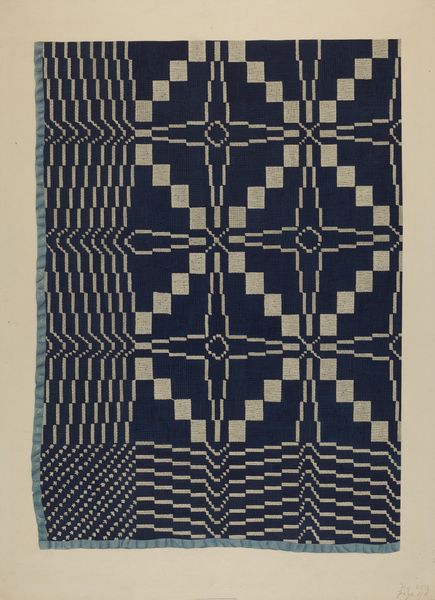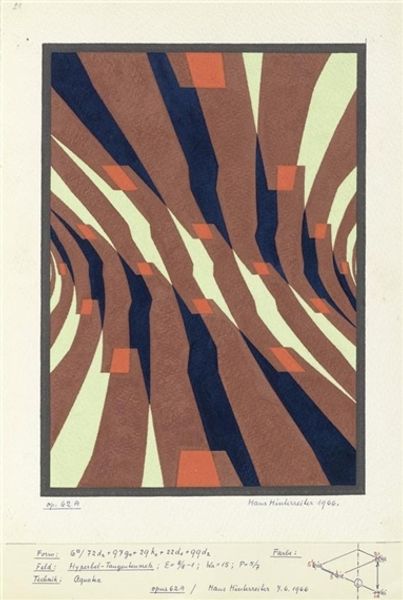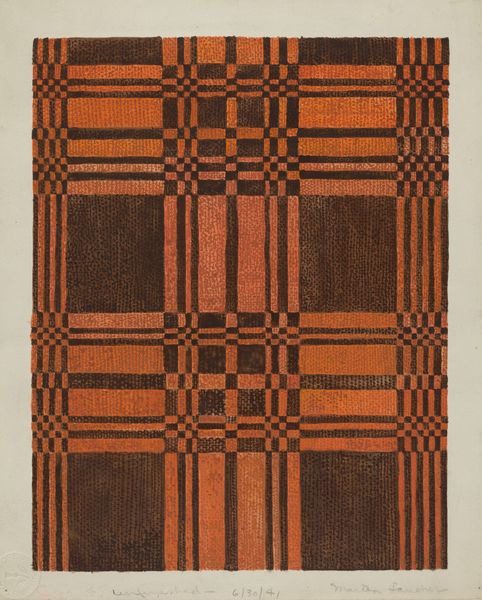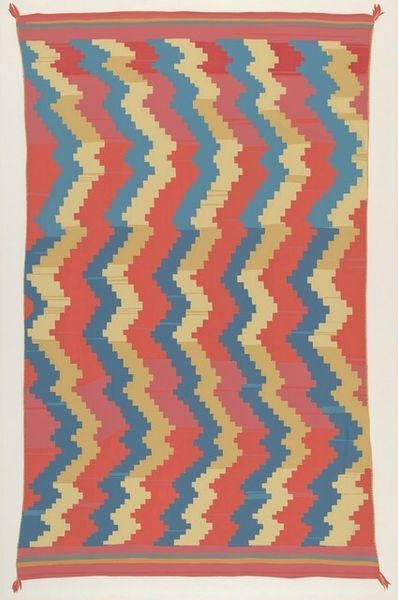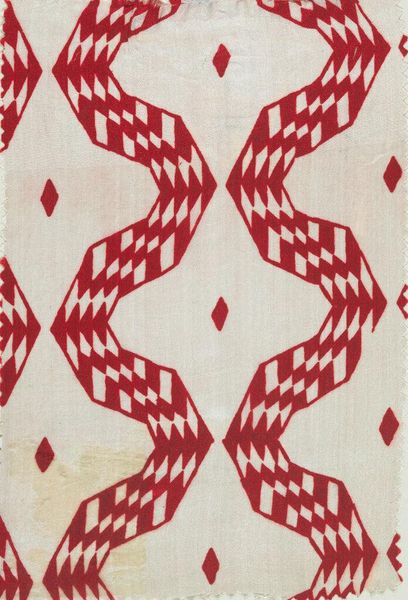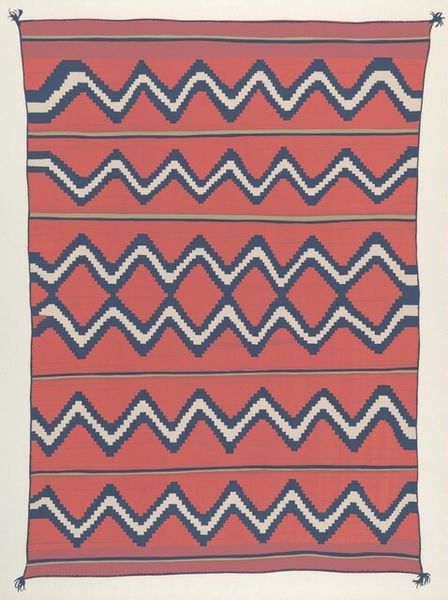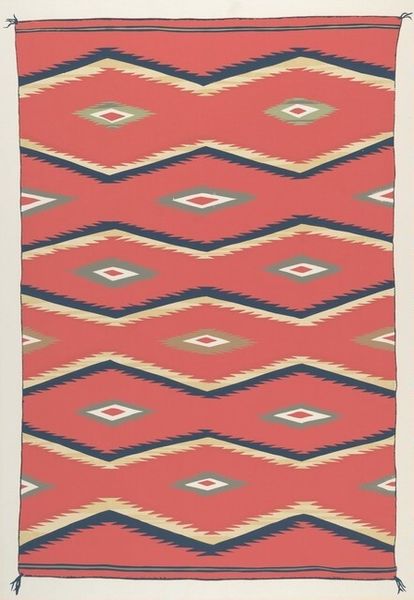
painting, textile
#
painting
#
textile
#
fashion and textile design
#
pattern design
#
geometric
#
fabric design
#
repetition of pattern
#
regular pattern
#
pattern repetition
#
textile design
#
imprinted textile
#
layered pattern
#
funky pattern
Dimensions: image: 597 x 454 mm sheet: 661 x 507 mm
Copyright: National Gallery of Art: CC0 1.0
Curator: We’re looking at "Plate 7" by Louie H. Ewing, created between 1940 and 1943. Editor: My first impression is one of quiet strength. The geometric shapes and muted palette create a visually calming yet assertive textile design. It has a very grounding feeling to it. Curator: Indeed. The regular patterns and their repetition really speak to me about the Pattern and Decoration movement; they highlight the labor-intensive processes involved in creating textiles. You also see a very apparent link to Indigenous American design. Think about where this piece sits within its history, particularly how museums and the market displayed—and often exploited—these art forms. Editor: Absolutely. There's an inherent political dimension, thinking about whose labor created the original textiles that likely inspired this design. Appropriation, consciously or not, always operates within a power structure. Where was Ewing situated in relation to this heritage? And what cultural and political factors might have influenced both the creation and subsequent reception of this design? Curator: It's difficult to definitively know without further archival investigation into Ewing's work, but her connection to this tradition would inevitably have affected both production and consumption. There’s an assumed skill here too, she’s thinking about the making of a material form. Someone, somewhere is putting labor into the means of production and construction. Editor: Exactly. How was this particular piece, being a print on textile, initially presented? Was it destined for mass production, targeting a specific consumer demographic? Understanding the intended market really informs how we interpret the design. Curator: And consider its resonance today! It really transcends a particular time or trend. I find I continue to think about the labor, the materials and ultimately the function, or multiple potential functions, it offers. Editor: It certainly forces me to confront the social history of aesthetics and decor. Hopefully prompting greater reflection on the sources and circulation of designs in the broader marketplace of imagery.
Comments
No comments
Be the first to comment and join the conversation on the ultimate creative platform.
